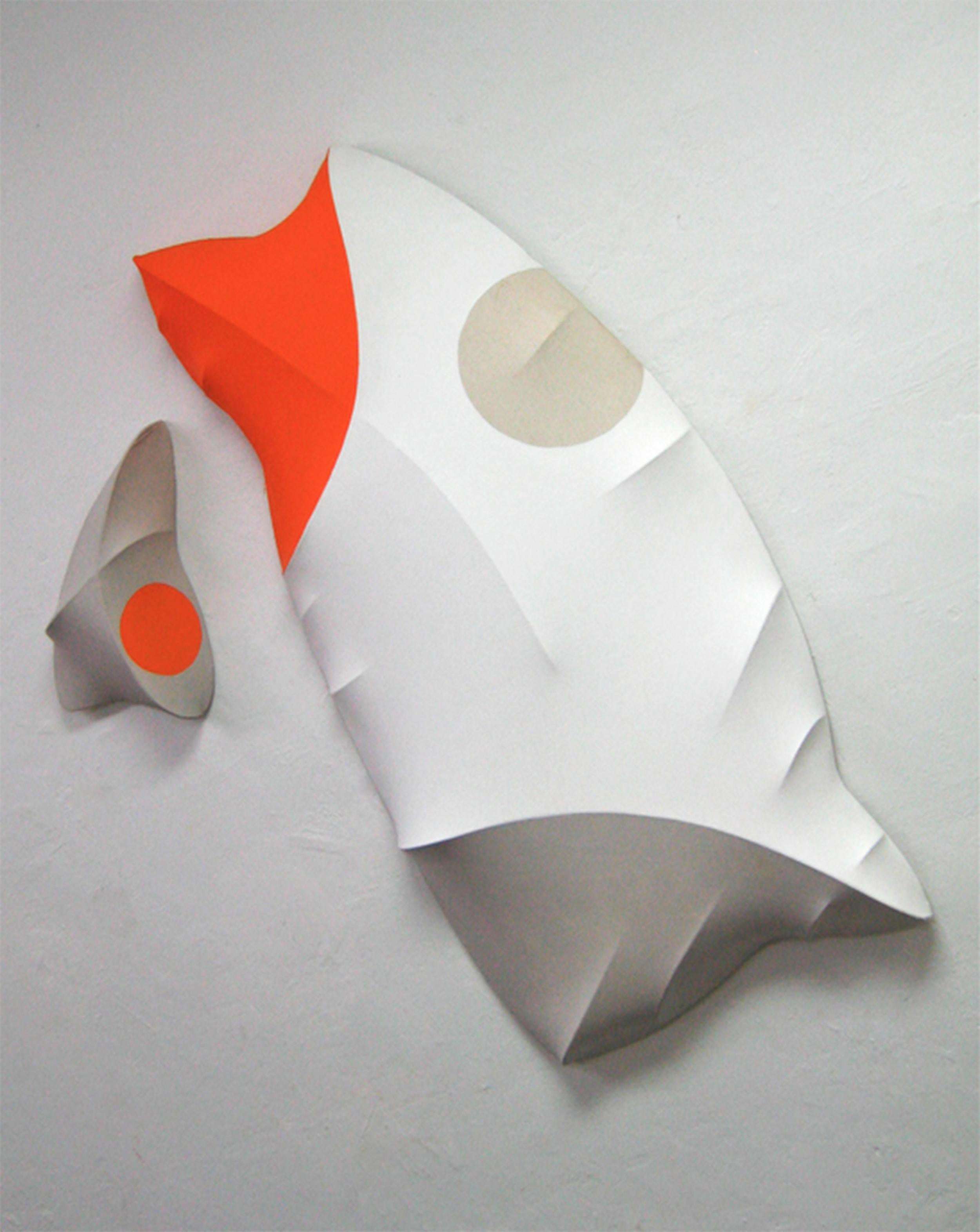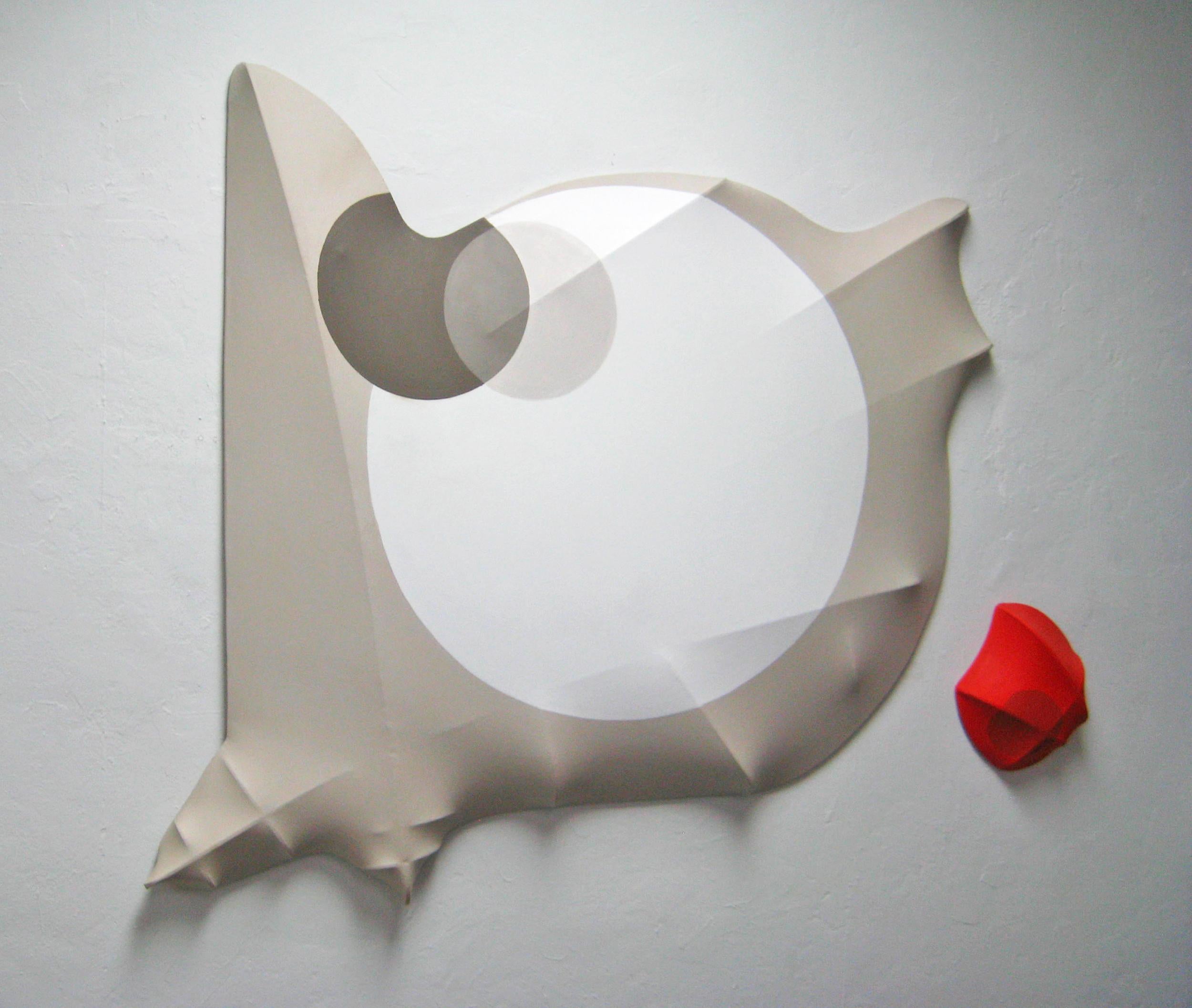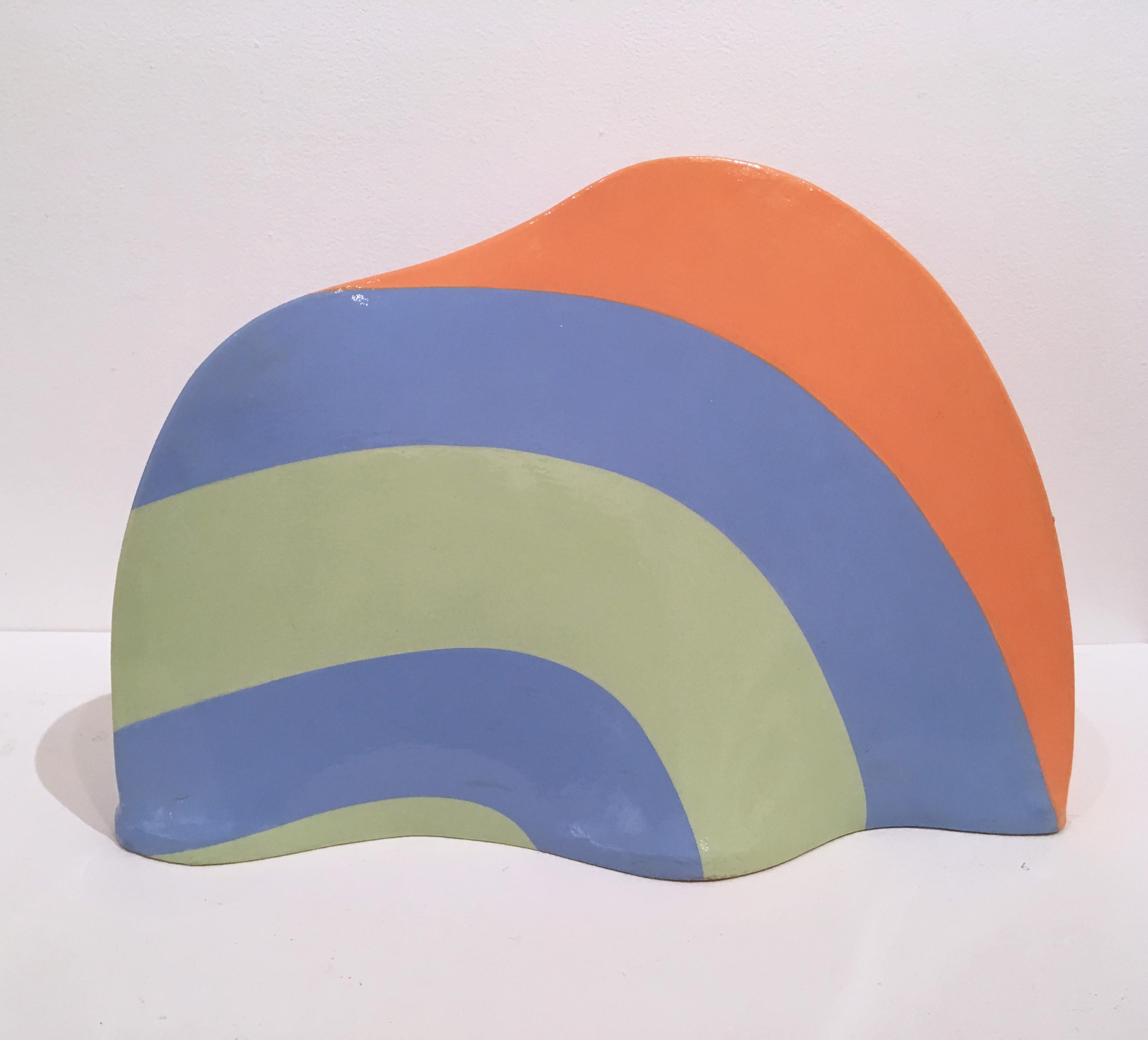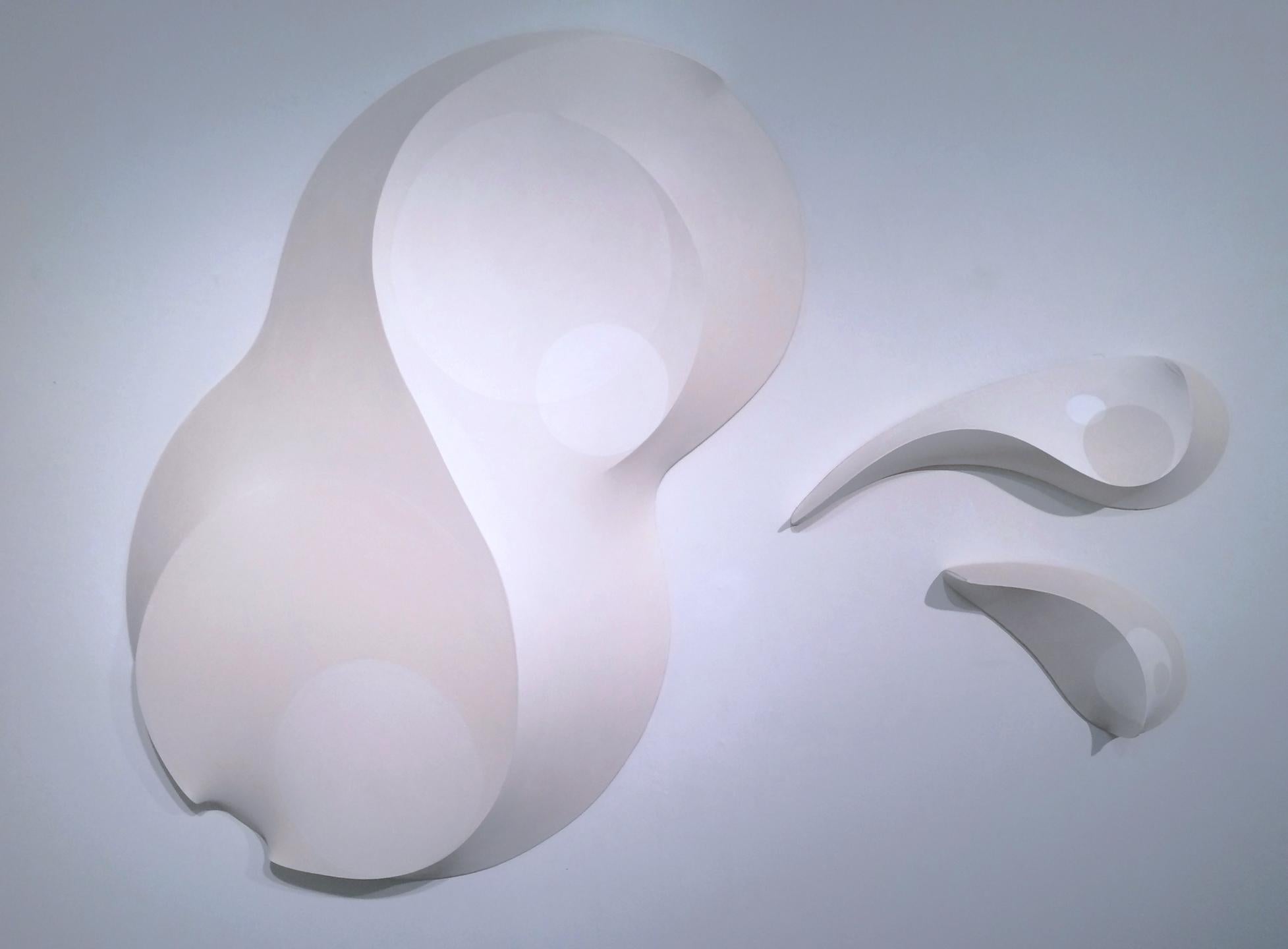Items Similar to Number 29, Vertebrate Companion Series, 2012, oil on canvas, wall sculpture
Want more images or videos?
Request additional images or videos from the seller
1 of 8
George GoodridgeNumber 29, Vertebrate Companion Series, 2012, oil on canvas, wall sculpture 2012
2012
About the Item
Oil on 3-D stretched canvas, dimensions listed for piece as shown. Dimensions are variable depending on hanging formation. Wall sculpture, orange, green, and purple.
- Creator:
- Creation Year:2012
- Dimensions:Height: 36 in (91.44 cm)Width: 32 in (81.28 cm)Depth: 8 in (20.32 cm)
- Medium:
- Movement & Style:
- Period:
- Condition:
- Gallery Location:Jersey City, NJ
- Reference Number:1stDibs: LU126916119492
About the Seller
5.0
Gold Seller
These expertly vetted sellers are highly rated and consistently exceed customer expectations.
Established in 2016
1stDibs seller since 2019
140 sales on 1stDibs
Typical response time: 13 hours
- ShippingRetrieving quote...Ships From: Jersey City, NJ
- Return PolicyA return for this item may be initiated within 1 day of delivery.
More From This SellerView All
- Number 17, Vertebrate Companion Series, 2010, oil on canvas, wall sculptureBy George GoodridgeLocated in Jersey City, NJOil on 3-D stretched canvas, dimensions listed for piece as shown. Dimensions are variable depending on hanging formation. Wall sculpture, white, orange, and gray.Category
2010s Abstract Geometric Abstract Paintings
MaterialsCanvas, Wood, Oil
- Number 15, Vertebrate Companion Series, 2010, oil on canvas, wall sculptureBy George GoodridgeLocated in Jersey City, NJOil on 3-D stretched canvas, dimensions listed for piece as shown. Dimensions are variable depending on hanging formation. Wall sculpture, white, red, and gray.Category
2010s Abstract Geometric Abstract Paintings
MaterialsCanvas, Wood, Oil
- Number 26, Vertebrate Companion Series, 2012, acrylic on canvas, wall sculptureBy George GoodridgeLocated in Jersey City, NJAcrylic on 3-D stretched canvas, dimensions listed for piece as shown. Dimensions are variable depending on hanging formation. Wall sculpture, white, red, and gray.Category
2010s Abstract Geometric Abstract Paintings
MaterialsCanvas, Wood, Acrylic
- Waves of Contentment 2, 2019, acrylic, resin on 3-D stretched canvas, sculptureBy George GoodridgeLocated in Jersey City, NJAcrylic and resin on 3-D stretched canvas. Sculpture, blue, green, orange. Abstract, biomorphic.Category
2010s Abstract Geometric Abstract Paintings
MaterialsCanvas, Resin, Wood, Acrylic
- Waves of Contentment 1, 2019, acrylic, resin on 3-D stretched canvas, sculptureBy George GoodridgeLocated in Jersey City, NJAcrylic and resin on 3-D stretched canvas. Sculpture, blue, green, orange. Abstract, biomorphic.Category
2010s Abstract Geometric Abstract Paintings
MaterialsCanvas, Wood, Acrylic, Resin
- Beauty is Eternity Gazing at Itself In the Mirror, 2013, Acrylic wall sculptureBy George GoodridgeLocated in Jersey City, NJAcrylic on 3-D stretched canvas with wood armature. Dimensions listed for piece as shown. Dimensions are variable depending on hanging formation. Wall sculpture, white, tan, and gray.Category
2010s Abstract Geometric Abstract Paintings
MaterialsCanvas, Wood, Acrylic
You May Also Like
- Fenêtre transparente - contemporary modern geometric sculpture painting panelBy Olivier JuliaLocated in Doetinchem, NLFenêtre transparente is a unique contemporary modern sculpture painting panel by French-Dutch artist Olivier Julia. The panel effectively is a flat woode...Category
1990s Abstract Geometric Abstract Paintings
MaterialsWood, Oil
- VERSO EQUIVALENCE 1 - acrylic, staples, pine wood, cut linen -Abstract geometricBy Linda King FergusonLocated in Signal Mountain, TNThis painting by Linda King Ferguson is part of her equivalence series, which began as a feminist project; works that subvert the historically male gaze and a material language speaking of gendered concerns. While typically, King Ferguson paints both sides of the canvas and cuts a flap on the the frontside to reveal the color of the back of the canvas, she unexpectedly does the opposite here. The painting is hung from the "frontside" of the canvas, revealing to us the raw edges of her linen canvas, stapled to the stretchers. Two oblong shapes of pink and red dominate the center of the painting. A thin semioval cut has been made inside of both of these shapes. Her color choices first came from Helen Molesworth’s essay, Painting With Ambivalence, published in WACK! Art of the Feminist Revolution. The Essay includes a large reproduction of Mary Heilmann’s 1979 painting...Category
2010s Abstract Geometric Abstract Paintings
MaterialsMetal
- "Untitled, " Seymour Fogel, Geometric Abstraction, Texas Hard-EdgeBy Seymour FogelLocated in New York, NYSeymour Fogel Untitled Oil on illustration board construction 10 x 7 1/2 inches Provenance: Estate of the artist Charles and Faith McCracken Larry and Trish Heichel Private Collection Seymour Fogel was born in New York City on August 24, 1911. He studied at the Art Students League and at the National Academy of Design under George Bridgeman and Leon Kroll. When his formal studies were concluded in the early 1930s he served as an assistant to Diego Rivera who was then at work on his controversial Rockefeller Center mural. It was from Rivera that he learned the art of mural painting. Fogel was awarded several mural commissions during the 1930s by both the Works Progress Administration (WPA) and the Treasury Section of Fine Arts, among them his earliest murals at the Abraham Lincoln High School in Brooklyn, New York in 1936, a mural in the WPA Building at the 1939-1940 New York World's Fair, a highly controversial mural at the U.S. Post Office in Safford, Arizona (due to his focus on Apache culture) in 1941 and two murals in what was then the Social Security Building in Washington, D.C., also in 1941. Fogel's artistic circle at this time included Phillip Guston, Ben Shahn, Franz Kline, Rockwell Kent and Willem de Kooning. In 1946 Fogel accepted a teaching position at the University of Texas at Austin and became one of the founding artists of the Texas Modernist Movement. At this time he began to devote himself solely to abstract, non-representational art and executed what many consider to be the very first abstract mural in the State of Texas at the American National Bank in Austin in 1953. He pioneered the use of Ethyl Silicate as a mural medium. Other murals and public works of art done during this time (the late 1940s and 1950s) include the Baptist Student Center at the University of Texas (1949), the Petroleum Club in Houston (1951) and the First Christian Church, also in Houston (1956), whose innovative use of stained glass panels incorporated into the mural won Fogel a Silver Medal from the Architectural League of New York in 1958. Fogel relocated to the Connecticut-New York area in 1959. He continued the Abstract Expressionism he had begun exploring in Texas, and began experimenting with various texturing media for his paintings, the most enduring of which was sand. In 1966 he was awarded a mural at the U.S. Federal Building in Fort Worth, Texas. The work, entitled "The Challenge of Space", was a milestone in his artistic career and ushered in what has been termed the Transcendental/Atavistic period of his art, a style he pursued up to his death in 1984. Painted and raw wood sculpture...Category
Mid-20th Century Abstract Geometric Abstract Paintings
MaterialsOil, Board
- "Message I, " Boris Margo, White Surrealist 3D PaintingBy Boris MargoLocated in New York, NYBoris Margo (1920 -1995) Message I, circa 1970 Stretched canvas over relief 22 x 27 x 1 1/2 inches Best known as a painter of surrealist imagery, Boris Margo was born in Wolotschisk, Ukraine, in Russia. In 1919 he enrolled at the Polytechnik of Art at Odessa, and in 1924 received a grant to study at the Futemas (Workshop for the Art of the Future) in Moscow. A second grant enabled him to study the work of the Old Masters in the Hermitage Museum in Leningrad and to attend Pavel Filonov's Analytical School of Art in 1927. In 1928 Margo received a certificate from the Polytechnik and immigrated to Montreal, where he worked as a muralist for a year. Moving to New York City in 1930, he studied at the Roerich Museum, and two years later began teaching there. He began experimenting with celluloid and acetone in his printmaking and was also an early user of the decalomania technique in oil painting. In 1943 he became an American citizen. Five years later Margo founded a Creative Art Seminar (later called Artists Gallery) in Orlando, Florida, and a year later established a similar venture in Provincetown, Massachusetts. Margo's first solo exhibition was at the Artists Gallery in New York City. Other important shows were held at the Brooklyn Museum, the Tweed Gallery at the University of Minnesota, Duluth, and the Michael Rosenfeld...Category
1970s Abstract Geometric Abstract Paintings
MaterialsCanvas
- Return to MeBy Louise BlytonLocated in Phoenix, AZb. Melbourne, Australia Louise Blyton is a reductive artist exploring the romance of raw linen and dry pigment. The artist’s geometrically shaped canvases explore color, light, and form through the visual language of Reductivism, an aesthetic style characterized by streamlined compositions, restricted color, and a reduction of form and means. Identifying with Reductivism’s simplicity, Blyton’s shaped canvases and three-dimensional wall sculptures elevate craftsmanship and process, achieving a compositional clarity that unifies color and form. To construct her works, Blyton covers custom built balsa wood stretchers with raw linen, adorning them with layers of pure pigment or acrylic paint. Each pigment reacts differently to raw linen and requires a specific number of coats to reach the artist’s desired level of saturation. As the artist explains, “I’m always looking for a kind of quietness and harmony when making my works even if the color being used is loud.” The artist creates her own spatial dimension by manipulating the shape of the canvas, which escapes from the flat surface of the wall, confusing its role as a painting. “Rather than responding to the architecture they ask particular attributes of the building to act as support,” as some works appear to climb the surface of the walls, while others straddle columns and corners. Louise Blyton lives and works in Melbourne, Australia. She graduated with a Bachelor of Fine Art at RMIT University, Melbourne, Australia in 1988. Her works are held in significant corporate and private collections in Australia, China, France, United Kingdom, Portugal, and the United States. Since 2000, Blyton has run an artist supply store called, St. Luke Artist Colourman, which specializes in professional paint and raw materials, with her husband David Coles.Category
2010s Abstract Geometric Abstract Sculptures
MaterialsLinen, Acrylic
- Days Sliding ByBy Louise BlytonLocated in Phoenix, AZb. Melbourne, Australia Louise Blyton is a reductive artist exploring the romance of raw linen and dry pigment. The artist’s geometrically shaped canvases explore color, light, and form through the visual language of Reductivism, an aesthetic style characterized by streamlined compositions, restricted color, and a reduction of form and means. Identifying with Reductivism’s simplicity, Blyton’s shaped canvases and three-dimensional wall sculptures elevate craftsmanship and process, achieving a compositional clarity that unifies color and form. To construct her works, Blyton covers custom built balsa wood stretchers with raw linen, adorning them with layers of pure pigment or acrylic paint. Each pigment reacts differently to raw linen and requires a specific number of coats to reach the artist’s desired level of saturation. As the artist explains, “I’m always looking for a kind of quietness and harmony when making my works even if the color being used is loud.” The artist creates her own spatial dimension by manipulating the shape of the canvas, which escapes from the flat surface of the wall, confusing its role as a painting. “Rather than responding to the architecture they ask particular attributes of the building to act as support,” as some works appear to climb the surface of the walls, while others straddle columns and corners. Louise Blyton lives and works in Melbourne, Australia. She graduated with a Bachelor of Fine Art at RMIT University, Melbourne, Australia in 1988. Her works are held in significant corporate and private collections in Australia, China, France, United Kingdom, Portugal, and the United States. Since 2000, Blyton has run an artist supply store called, St. Luke Artist Colourman, which specializes in professional paint and raw materials, with her husband David Coles.Category
2010s Abstract Geometric Abstract Sculptures
MaterialsLinen, Acrylic
Recently Viewed
View AllMore Ways To Browse
Green And Purple
Companion Brown
George D Green
Abstract Wood Wall Hanging
Geometric Hanging Sculpture
Purple Orange Sculpture
George Goodridge
Palm Beach Gold
Moon Gold Art
Ice Cream Art
Urban Planning
D Fl
Lilac Top
Mexico City Modern Wood
Large Minimal Painting
Space Pen
Modern Art In Gold Leaf Frame
Picasso Green





